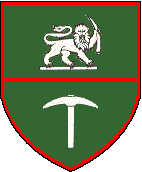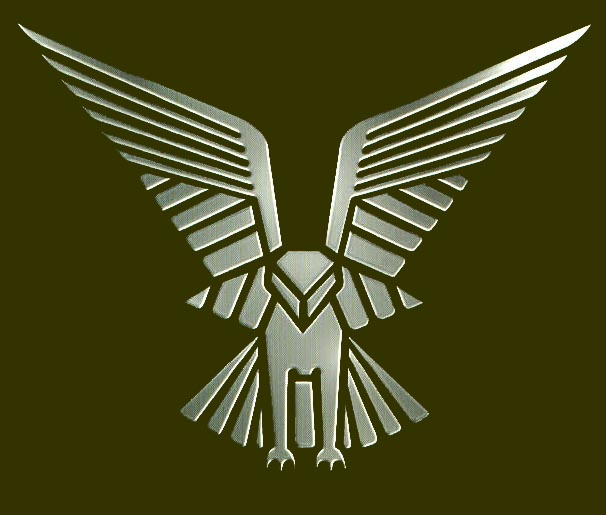....A notable exception to the "new fashion trend" in
Zimbabwe Rhodesian Security Forces is to be found where one would expect it: the
formidable Selous Scouts. Commonly known as the eyes and ears of the Fire
Forces (hunter-killer groups, normally helicopter-borne) the Selous Scouts have
already amassed a formidable reputation for cool (some say "cold")
efficiency. The earnest desire expressed by the leaders of the Patriotic
Front to do away with such units as the Selous Scouts in any Zimbabwe Rhodesian
regime in which said PF would be willing to participate, could be well
understood against the outstanding track record of the elite (and
"elite" it is, too, to their compatriots in the RLI, RAR, Grey's
Scouts et al, although no thoroughbred ZR unit will ever openly bow to the
superiority of another!).
After being the guest at the HQ (outside Salisbury,
complete with a steadily waxing cemetery) and then flown up to the Scout's
training camp at Lake Kariba (very aptly named "Wafa Wafa", which
roughly translates "if I die/succumb, I die/succumb//: Afrikaans more aptly
"kom ek om, só kom ek om") a measure of the Selous Scouts' young
(1973) track record as an independent unit has rubbed off.
A remarkable gathering of souls, indeed, from the
Commanding Officer down to the wafer-thin, quick-eyed instructors at the Wafa
Wafa training camp.
The aura of "being somewhat different"
starts right at the top. At 31, Lt Col Pat Armstrong ("the most handsome
man I've ever seen", sighed a Salisbury woman journalist) is the youngest
half-Colonel in the Army. The Selous Scouts' CO is a born leader, captaining the
Rhodesian under 20 rugby side as eight man and a certainty for the same berth
and post in the senior team, were it not for war commitments. Pushing
1,90 mm, blue-eyed and fair-haired, this hulk of a man is not only a qualified
pilot as well but also (take note, ladies) a bachelor. According to his
friends he has remarkable resilience, tough as a propeller blade, with a good
turn of voice when it comes to camp-fire revelry.
Lt Col Armstrong heads an outfit more than one
thousand strong, volunteers all and completely integrated: Regular Whites,
Blacks and National Servicemen. The unit's motto - PAMWE CHETE - is,
therefore, most apt, spelling out in no uncertain terms the very composition of
the Selous Scouts - ALL TOGETHER.
From humble beginnings (as trackers attached to the
School of Infantry at Gwelo) the next logical development was the establishment
of a tracking school at Kariba. As operations developed the unit
eventually came into being in 1973, based on a volunteer/selection principle.
Some nine out of ten volunteers drop out before wearing the coveted green and
brown (colours of the bush). The remainder have, in these short years,
scythed a glorious track through countless operations. Truly, the Selous
Scouts are known from Pofadder to Peking. The unit holds the only Grand
Cross of Valor ever awarded in the country (the recipient must remain
anonymous). Their espirit de corps is reflected in differences to
"normal" units such as their Standard (not Colour), which embodies the
spirit and róles of the Scouts: silverplated osprey; wide oxhorns partially
wrapped round with elephant skin (for toughness) and zebra skin (symbolism the
White/Black relationship); wildebeest tails set in silver and ivory (in keeping
with indigenous beliefs about the warding off of evil spirits).
Although of battalion-plus strength, the Selous
Scouts have no regimental band. Instead, they sing when on parade, at
funerals, on the march. All para-trained, the men are trained to provide
targets for Fire Forces but also to annihilate the enemy by themselves as and
when required. Their hitting power is formidable, as any terrorist
"returnee" will tell you.
They are now building their own chapel, sloping
roof groping Upwards, and seating 268 inside with room for 800 more outside.
Domestically designed, the chapel incorporates a novel glass dome, thus ensuring
contact with the bush even when at prayers.
The nearby cemetery, presently little more than a
tract of bushless land, punctuated by a few flower-covered mounds, is divided
into three sections for those who die on active service; those killed in action;
for dependents and for deaths from natural causes. The Selous Scouts'
indigenous espirit de corps permeates this area, too, as members presently hale
and hearty, have already made their "reservations" at choice plots,
such as under a sprawling msasa tree.
At the time of our visit to the Selous Scouts only
13 of their number had been killed in action - a truly remarkable track record
for a unit which move, in the words of Mao tse Tung, "with the fish in the
water".
And When I Die...
Up at Wafa Wafa training camp where the clear (and often not-so-clear)
water of the mighty Lake Kariba laps at the lower regions of the somewhat
primitive wood-and-thatch "establishment", mad dogs and Englishmen
(and Shona and Matabele and other Blacks) volunteer to go out in the midday sun.
Here they arrive to be weighed, tried and, if deemed fit for the green and
brown, trained. They arrive on foot, having been debussed some kilometers
from the camp just to sort out the boys from the men even before Training
Officer Capt xxx leaps into action with his sets of courses, all immaculately
designed and all funnelled towards an end-product of honed steel.
Capt xxx, a deceptively soft-spoken, mild-mannered,
smallish blond man, and his small staff of equally dedicated men run selection,
tracking, COIN and even survival courses (for Airmen). For the Selous
Scouts he has devised programmes bordering on the impossible. Nine out of
ten volunteers drop out, are given a compassionate handshake and may even be
invited to try again . . .if they are insane enough. Their Training
Officer hardly promotes the image of home-comforts. He likes his men to
live off the land, carry no water ("a man who cannot find water in his area
should not be a Selous Scout"), report sick only when already dead and lay
down his life for any Government of the Day.
Capt xx also likes his trainees to drink straight
out of Lake Kariba ("we have not had a case of bilharzia for two
years"), rough it under primitive shelters and learn to kill in several
sophisticated ways, making use of the instruments at hand. By the same
token he does not believe in "heat fatigue" ("it is all in the
mind") as distinct from "heat stroke". Skin off fingers,
elbows and knees after a Tarzan-session in the 10m high tree-tops rope course;
buttocks punctuated by craftily-planted thorn-tree branches in case of a slip
off the high rope; a mud-bath in one of the lake's overgrown inlets after a
long, fast slide on a improvised "foofy-slide"; a 25 kilometer hike in
mountainous terrain carrying some 25 kg of deadweight stones; and, above all,
the ability to observe, see and not be seen, kill and not be killed and to be
welded into a seamless unit . . . these are some of the trademarks of Wafa Wafa.
In the pursuit of these aims the men of Selous
Scouts accept no compromise. After all, they are in this together:
PAMWE CHETE.




